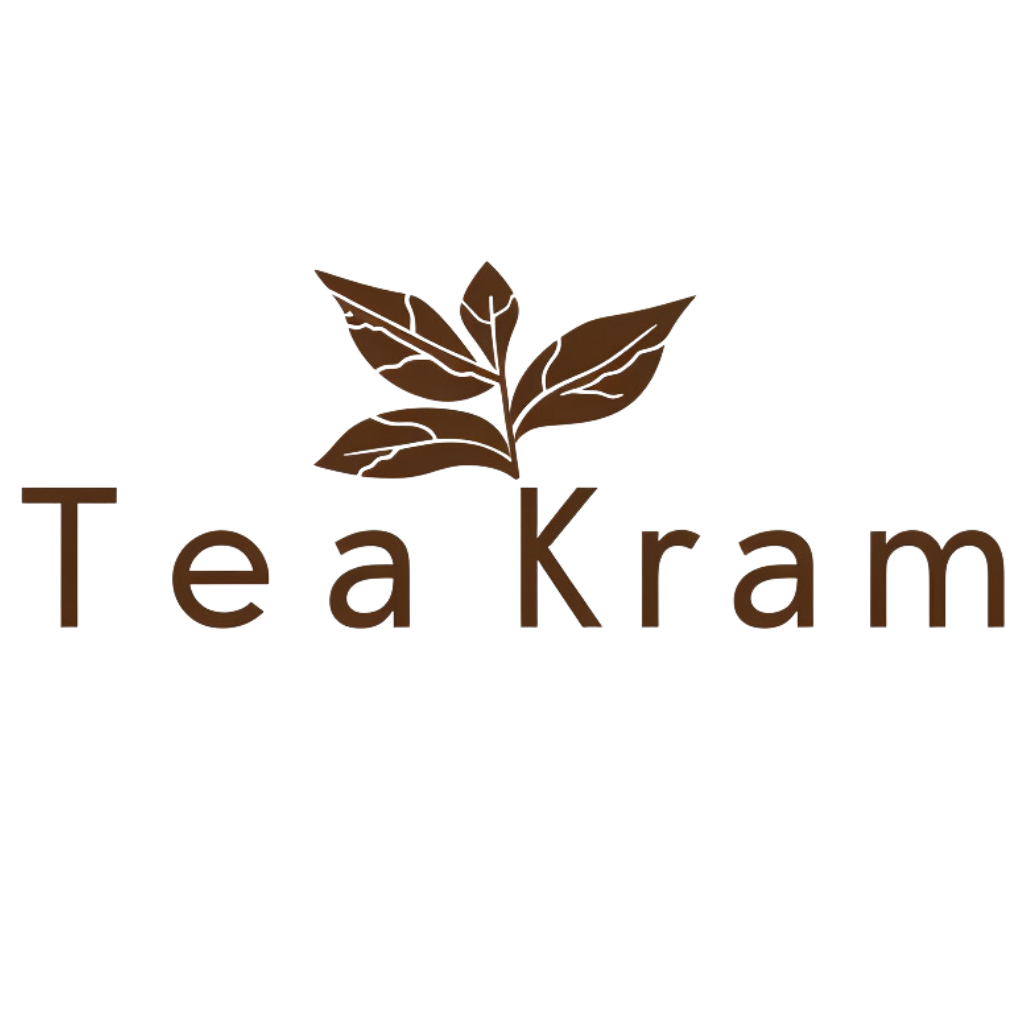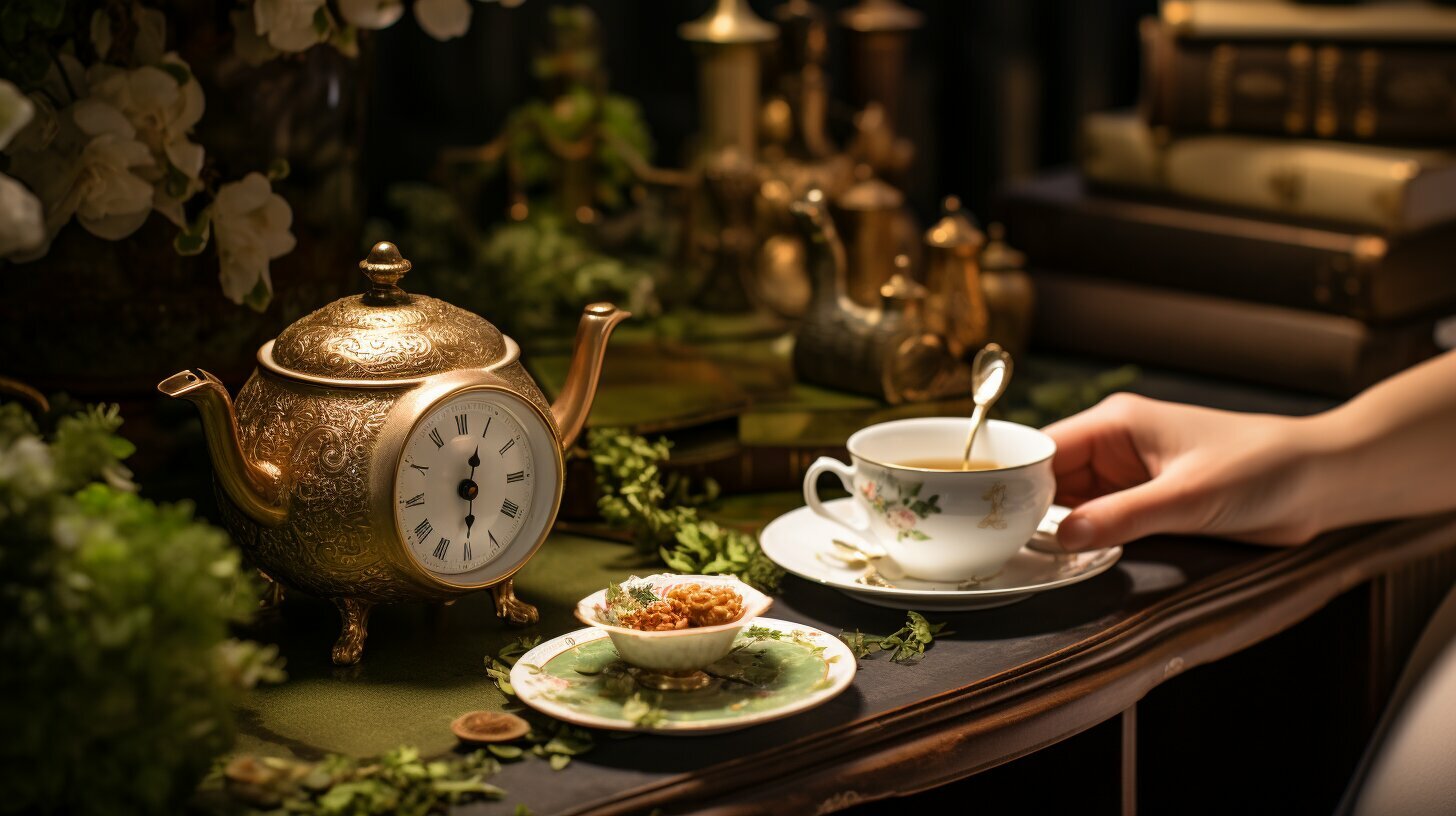Welcome, tea lovers! If you’re wondering how to make tea, look no further. In this comprehensive guide, I will share simple steps and expert tips to help you create the perfect cup of tea every time. Whether you’re a newbie or a tea connoisseur, this article will provide valuable insights into the tea-making process. Let’s get started!
Key Takeaways:
- Learning how to make tea can be an enjoyable and rewarding process.
- Understanding the different types of tea and selecting high-quality tea leaves or tea bags are crucial steps in creating a well-balanced cup of tea.
- Using fresh, filtered water and measuring the tea-to-water ratio accurately are essential for a flavorful brew.
- Brewing time and techniques can greatly affect the strength and taste of your tea.
- Additional elements such as sweeteners, milk, or lemon can enhance the flavor and create a unique taste.
Understanding Tea Varieties and Types
Before we dive into the tea-making process, let’s take a moment to understand the different tea varieties and types available. Each type of tea has its own unique flavor profile and brewing requirements, so it’s important to choose the right one for your taste preferences. Let’s explore some of the most popular types of tea:
| Tea Type | Flavor Profile | Brewing Requirements |
|---|---|---|
| Black Tea | Bold, robust flavor | Boiling water, 3-5 minute steep time |
| Green Tea | Mild, grassy, slightly sweet flavor | Below boiling water, 1-3 minute steep time |
| White Tea | Delicate, floral, slightly sweet flavor | Below boiling water, 2-4 minute steep time |
| Oolong Tea | Light, floral, slightly sweet flavor | Boiling water, 3-5 minute steep time |
| Herbal Tea | Varies based on ingredients, can be sweet, spicy, or earthy | Boiling water, steep time varies based on ingredients |
When choosing your tea, consider the flavor profile you prefer and the time of day you will be drinking it. For example, black tea is a great choice for a morning or afternoon pick-me-up, while herbal teas can be enjoyed any time of day and can even aid in relaxation or sleep.
Tea Brewing Guide and Preparation Tips
Now that you know the different tea varieties and types, it’s time to prepare for brewing. Make sure to have any necessary tools and equipment, such as a tea kettle, teapot, or strainer, and select high-quality tea leaves or tea bags for the best possible flavor. Stay tuned for the next section to learn more about selecting quality tea leaves or bags!
Selecting Quality Tea Leaves or Bags
When it comes to making a great cup of tea, selecting high-quality tea leaves or tea bags is crucial. With so many options available, it can be overwhelming to know where to start. Here are some of the best tea-making techniques to keep in mind when selecting your tea:
| Loose Leaf Tea | Tea Bags |
|---|---|
Loose leaf tea tends to have a higher quality than tea bags, as the leaves are often fresher and less processed. Look for whole leaves or larger broken pieces for the best quality. Avoid tea that is powdered or too finely broken, as it may result in a bitter taste. |
Tea bags are a convenient option for those on-the-go or who prefer a quick and easy cup of tea. Look for tea bags made from whole tea leaves instead of dust or fannings for the best flavor. |
When selecting loose leaf tea, be sure to check the date of production and opt for tea that was harvested within the last 6-12 months. Store loose leaf tea in an airtight container away from light and moisture to maintain freshness. |
Some tea bags are individually wrapped, which helps to maintain freshness. If purchasing tea bags in bulk, be sure to transfer them to an airtight container to help preserve flavor. |
No matter which type of tea you choose, using high-quality tea leaves or bags is key to making the perfect cup of tea. Remember to store your tea properly and check the production date to ensure the freshest taste.
Preparing the Water
Now that you’ve selected your favorite tea, it’s time to prepare the water.
First and foremost, it’s important to use fresh, filtered water. Tap water can contain impurities that can affect the taste of your tea.
The ideal temperature of the water varies depending on the type of tea you’re making:
- Black tea: boiling water (212°F)
- Green tea: water just below boiling point (160-180°F)
- White tea: water just below boiling point (160-180°F)
- Oolong tea: boiling water (195-205°F)
- Herbal tea: boiling water (212°F)
One easy way to heat water to the desired temperature is to use an electric kettle with temperature control settings. If you don’t have one, bring the water to a boil and then let it cool for a few minutes before pouring it over the tea leaves or bags.
Remember, using the right temperature of water is crucial for a well-balanced cup of tea.
Measuring the Tea
Getting the right tea-to-water ratio is crucial for creating the perfect cup of tea. Measuring the tea accurately is a key step in achieving the desired strength and flavor. Here is a step-by-step guide on how to measure the perfect amount of tea for your brew:
- Start by determining the size of your teapot or teacup. As a general rule, use one teaspoon of loose tea or one tea bag for every six to eight ounces of water.
- Measure the desired amount of loose tea using a teaspoon or tablespoon. For a stronger brew, you can add an extra teaspoon or two.
- If using a teabag, remove it from its packaging and place it in your cup or teapot.
- Add freshly boiled water to your cup or teapot. Make sure to pour the water slowly, allowing it to steep the tea properly.
- Stir the tea gently with a spoon to ensure that it is evenly distributed in the water.
Remember, the amount of tea and water used can vary depending on the type of tea and your personal taste preferences. Feel free to experiment with different measurements until you find the perfect tea recipe for you.
Brewing Time and Techniques
Now that you’ve prepared your water and measured your tea, it’s time to brew it! There are several brewing techniques to choose from, and the method you choose can greatly affect the flavor of your tea.
For a classic cup of tea, the traditional brewing method involves steeping loose tea leaves in hot water for a set amount of time before straining. Many tea experts recommend using a tea infuser to contain the loose tea leaves and make straining easier.
If you prefer a stronger cup of tea, you can opt for the “Russian” method, which involves using double the amount of tea and steeping it for an extended period of time. This method is recommended for black teas and can result in a bolder flavor profile.
Another popular brewing method is the “cold brew” technique, which involves steeping tea leaves in cold water for several hours or overnight. This method is ideal for delicate teas like green and white teas, as it results in a smoother, less bitter taste.
Brewing Tips
Here are some expert tips to guide you through the brewing process:
- Adhere to the recommended brewing time and temperature for your chosen variety of tea.
- Use a timer to ensure you do not over-brew your tea and end up with a bitter taste.
- Pay attention to the water temperature, as different teas require different temperatures to release their full flavor.
- Do not stir the tea while it is brewing, as this can cause bitterness.
- If you are using tea bags, avoid squeezing them when removing them from the cup, as this can result in a bitter taste.
With these tips, you’ll be able to brew the perfect cup of tea every time.
Straining or Removing Tea Bags
Once your tea has steeped to your desired strength, it’s time to remove the tea bags or strain loose tea leaves. This is an important step in the tea-making process to avoid over-steeping and bitterness.
For loose tea leaves, pour the tea through a fine-mesh strainer or use a tea infuser with a built-in strainer to catch any loose leaves.
When using tea bags, gently squeeze them against the side of the mug with a spoon to release any remaining liquid. Then, carefully remove the tea bag from the mug.
It’s important to handle the tea bags carefully to avoid hot water splashing onto your skin. Be sure to dispose of used tea bags and loose tea leaves in your compost or trash bin.
With these easy ways to make tea, you can now enjoy a perfectly brewed cup of tea every time.
Adding Sweeteners, Milk, or Lemon
Personalizing your tea with sweeteners, milk, or lemon can take your tea to the next level. There are several ways to experiment with your tea to create a unique taste.
Adding sweeteners such as honey, sugar, or agave syrup can enhance the flavor of your tea. But be sure to add them in moderation, as too much can overpower the subtle flavors of the tea.
Milk is a popular addition to tea, especially for black tea varieties. The creamy texture of milk can balance out the bitterness of the tea. You can use regular milk, almond milk, or soy milk depending on your preference.
Lemon is a great way to add a refreshing twist to your tea. Squeezing a little lemon juice into your tea can add a tart and tangy taste that pairs well with many tea varieties.
Experimenting with different flavors such as cinnamon, vanilla, or lavender can also add a unique touch to your tea. But remember, it’s all about personal preference when it comes to adding extras to your tea.
These tea preparation tips can help you to create a truly personalized cup of tea that suits your individual taste. So why not try a few of these tea-making techniques today?
Serving and Enjoying Your Tea
After taking the time to prepare your perfect cup of tea, it’s finally time to savor and enjoy it. To fully appreciate your tea, it’s important to consider the serving temperature, tea cups, and proper way to drink it.
Serving Temperature
The ideal serving temperature for tea depends on the type of tea you’ve chosen. For black teas, the recommended serving temperature is between 195-205°F. For green teas, the ideal temperature is between 165-185°F. And for herbal teas, you can serve them at 208°F.
Using a temperature-controlled kettle or a thermometer can help you achieve the perfect temperature for your tea. If you don’t have these tools, simply boiling water and letting it sit for a few minutes before pouring it over your tea can also do the trick.
Tea Cups
The type of tea cup you use can also affect the taste and experience of drinking your tea. For example, porcelain or ceramic cups help retain heat and enhance the aroma of the tea. Glass cups are ideal for admiring the color and clarity of the tea.
When pouring your tea, hold the cup by the handle to avoid burning your fingers. Take a moment to appreciate the aroma before taking a sip.
Drinking Your Tea
When drinking tea, it’s important to take small sips to fully appreciate the flavor and avoid burning your tongue. Hold the tea in your mouth for a moment before swallowing to fully experience the flavors and notes.
As you savor your tea, take a moment to relax and enjoy the experience. Whether you’re enjoying a cup alone or with friends, the act of drinking tea can be a calming and enjoyable ritual that adds a moment of peace to your day.
By following these expert tea making tips and best tea making techniques, you can create a truly enjoyable tea experience that satisfies both your taste preferences and your senses.
What are the best types of tea to use when making tea?
When making tea, it is important to consider the types of tea and their characteristics. Green tea is known for its freshness and antioxidant properties, while black tea offers a rich and robust flavor. Herbal teas, such as chamomile and peppermint, are caffeine-free alternatives with their own unique health benefits. Additionally, white tea is valued for its delicate taste and minimal processing. Each type has its own distinct qualities, allowing you to choose based on your preferences and desired effects.
Conclusion
There you have it – a comprehensive guide on how to make tea like a pro! With these simple steps and expert tips, you can create the perfect cup of tea every time. Remember to choose high-quality tea leaves or tea bags, prepare the water to the ideal temperature, and measure the tea precisely for the right balance of flavor.
Experiment with different brewing times and techniques to find your ideal taste. And don’t forget to personalize your tea with sweeteners, milk, or lemon to make it unique. When it’s ready, serve your tea at the perfect temperature in suitable tea cups, and savor every sip.
Now that you know how to make tea, you can enjoy the experience anytime you want. Share your tea-making journey with friends and family, and become a tea expert. Happy brewing!
Can I Use Tea Tree Oil in My Homemade Tea Recipe?
Tea tree oil is a potent essential oil known for its skincare benefits. However, it is important to dilute tea tree oil before using it in homemade tea recipes. Adding a few drops to your tea can provide a refreshing flavor, but only if you know how to dilute tea tree oil properly. Be cautious and follow recommended guidelines to ensure a safe and enjoyable tea experience.
There you have it – a comprehensive guide on how to make tea like a pro! With these simple steps and expert tips, you can create the perfect cup of tea every time. Remember to choose high-quality tea leaves or tea bags, prepare the water to the ideal temperature, and measure the tea precisely for the right balance of flavor.
Experiment with different brewing times and techniques to find your ideal taste. And don’t forget to personalize your tea with sweeteners, milk, or lemon to make it unique. When it’s ready, serve your tea at the perfect temperature in suitable tea cups, and savor every sip.
Now that you know how to make tea, you can enjoy the experience anytime you want. Share your tea-making journey with friends and family, and become a tea expert. Happy brewing!
FAQ
How do I select the right type of tea?
Understanding the different varieties of tea can help you choose the right one for your taste preferences. Some popular options include black tea, green tea, and herbal tea. Experiment with different types to find your favorite!
What water should I use to make tea?
It’s important to use fresh, filtered water for the best flavor. Avoid using tap water, as it can contain impurities that affect the taste. Stick to clean, filtered water to ensure a delicious cup of tea.
How do I measure the right amount of tea?
The general rule of thumb is to use 1 teaspoon of loose tea leaves or 1 tea bag per 8 ounces of water. However, you can adjust this based on your personal taste preferences. Feel free to experiment with different amounts to find the perfect balance!
What is the ideal brewing time for tea?
The brewing time can vary depending on the type of tea you’re making. As a general guideline, black tea usually requires 3-5 minutes, while green tea needs 2-3 minutes. Herbal teas may require longer steeping times. Adjust the brewing time to suit your desired strength.
How do I strain loose tea leaves or remove tea bags?
To strain loose tea leaves, you can use a tea strainer or infuser. Simply place the strainer over your cup and pour the brewed tea through it, catching the leaves. For tea bags, you can easily remove them from the cup once the desired strength is reached.
Can I add sweeteners or milk to my tea?
Absolutely! Sweeteners like honey, sugar, or stevia can be added to enhance the flavor. Milk or cream can also be added to create a creamy texture. Experiment with different combinations to find your signature tea recipe!
What’s the best way to enjoy my tea?
To fully savor your tea, serve it at the recommended temperature for the specific type of tea you’re making. Use proper tea cups or mugs to enhance the experience. Take your time to enjoy the aroma and flavors of your freshly brewed tea.



